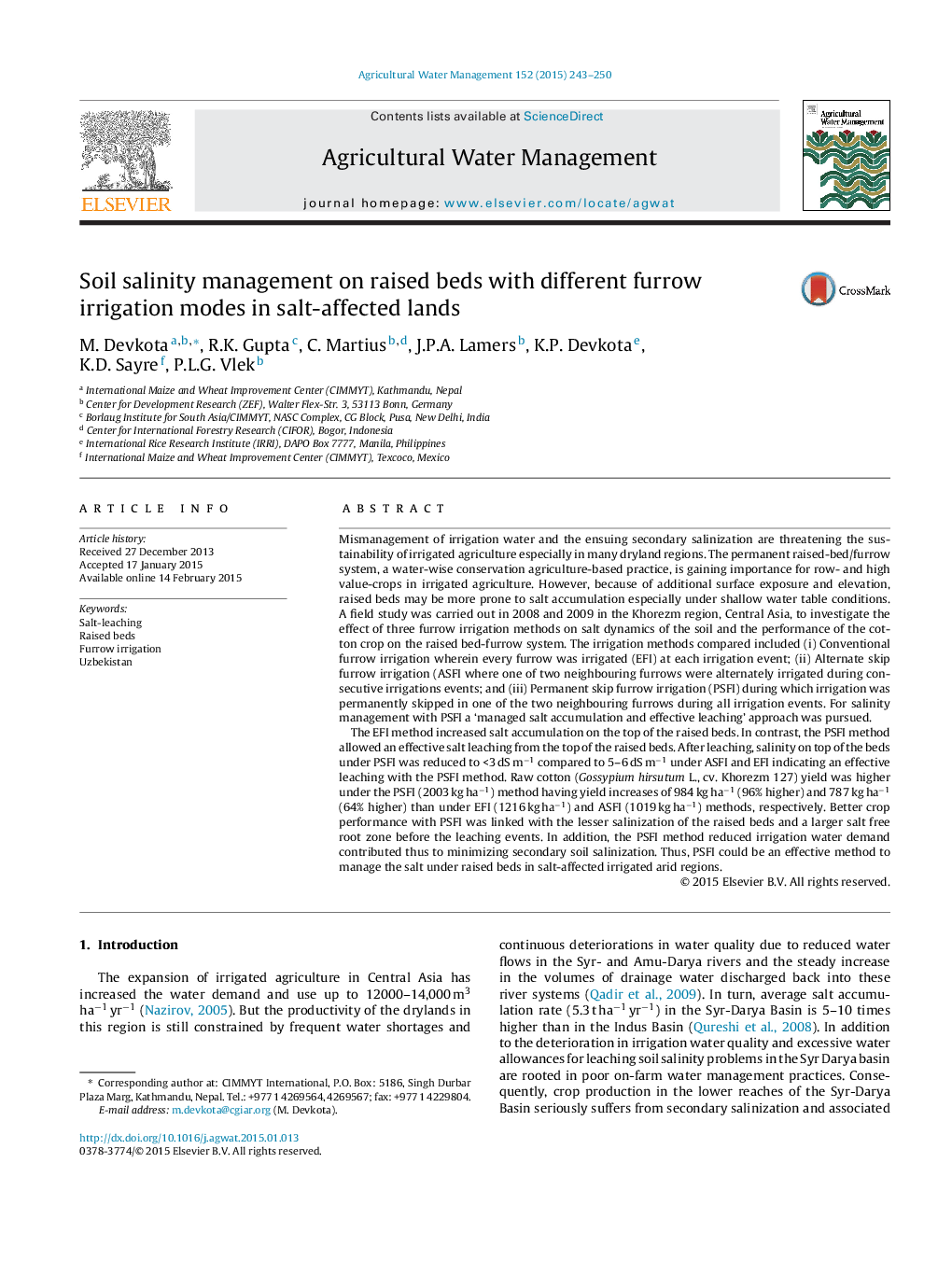| کد مقاله | کد نشریه | سال انتشار | مقاله انگلیسی | نسخه تمام متن |
|---|---|---|---|---|
| 4478536 | 1622927 | 2015 | 8 صفحه PDF | دانلود رایگان |
• Soil salinity on top of raised beds increases if irrigation is applied to every furrows compared to PSFI system.
• Permanent skip furrow irrigation (PSFI) reduces the salinity and amount of irrigation water on raised bed system.
• PSFI followed by leaching helps to manage salinity on raised bed system.
• PSFI followed by proper leaching can be potential option to grow crop in salt affected lands.
Mismanagement of irrigation water and the ensuing secondary salinization are threatening the sustainability of irrigated agriculture especially in many dryland regions. The permanent raised-bed/furrow system, a water-wise conservation agriculture-based practice, is gaining importance for row- and high value-crops in irrigated agriculture. However, because of additional surface exposure and elevation, raised beds may be more prone to salt accumulation especially under shallow water table conditions. A field study was carried out in 2008 and 2009 in the Khorezm region, Central Asia, to investigate the effect of three furrow irrigation methods on salt dynamics of the soil and the performance of the cotton crop on the raised bed-furrow system. The irrigation methods compared included (i) Conventional furrow irrigation wherein every furrow was irrigated (EFI) at each irrigation event; (ii) Alternate skip furrow irrigation (ASFI where one of two neighbouring furrows were alternately irrigated during consecutive irrigations events; and (iii) Permanent skip furrow irrigation (PSFI) during which irrigation was permanently skipped in one of the two neighbouring furrows during all irrigation events. For salinity management with PSFI a ‘managed salt accumulation and effective leaching’ approach was pursued.The EFI method increased salt accumulation on the top of the raised beds. In contrast, the PSFI method allowed an effective salt leaching from the top of the raised beds. After leaching, salinity on top of the beds under PSFI was reduced to <3 dS m−1 compared to 5–6 dS m−1 under ASFI and EFI indicating an effective leaching with the PSFI method. Raw cotton (Gossypium hirsutum L., cv. Khorezm 127) yield was higher under the PSFI (2003 kg ha−1) method having yield increases of 984 kg ha−1 (96% higher) and 787 kg ha−1 (64% higher) than under EFI (1216 kg ha−1) and ASFI (1019 kg ha−1) methods, respectively. Better crop performance with PSFI was linked with the lesser salinization of the raised beds and a larger salt free root zone before the leaching events. In addition, the PSFI method reduced irrigation water demand contributed thus to minimizing secondary soil salinization. Thus, PSFI could be an effective method to manage the salt under raised beds in salt-affected irrigated arid regions.
Journal: Agricultural Water Management - Volume 152, April 2015, Pages 243–250
